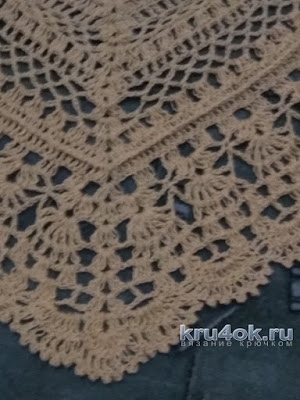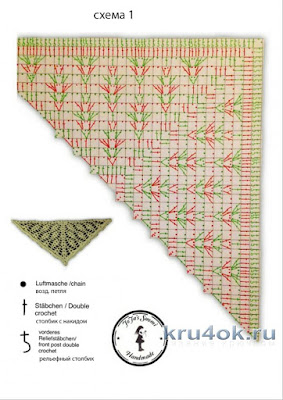Language Of Crochet:
Let's begin with the more common abbreviations used in crocheting:
ch st: chain stitch
dc: double crochet
hdc: half-double crochet
sc: single crochet
sl st: slip stitch
trc: triple crochet
yo: yarn over
tr: treble crochet
sp: space
sk: skip
pat st: pattern stitch
There are other abbreviations you will use, but as a beginner in crochet, these are the most basic abbreviations you will need to memorize.
Before we go into the basic stitches, we'll mention the foundation chain, a key term in crocheting. Just as a house needs a solid foundation, crocheting needs a foundation as well. The foundation chain is defined as a cross-stitched row that serves as the base of your crocheting. It holds all your stitches and all the succeeding rows you will make.
Basic Stitches
Single Crochet-this is the first of the basic stitches. It is the shortest stitch and results in a firm, flat product. To make a single crochet, make sure the front side of the chain is facing you, then insert the hook through a chain, yarn over, pull the loop through the chain, yarn over again, and pull through both loops on the hook.
Double Crochet -as in single crochet, pass the hook from the front to the back of the work through the upper loop of a stitch of the previous row. The thread is caught on the hook and drawn through this loop.
Half-Double Crochet -a cross between a single crochet and a double crochet stitch. Begin with a yarn over, insert the hook into a stitch, yarn over and pull through the stitch; do another yarn over and pull through the three loops on your hook.
Triple Crochet -the last of the basic stitches and also the tallest. To make a triple crochet, yarn over the hook twice; insert the hook into the stitch, yarn over again and pull through the first of two loops (the two closest to the end point); yarn over again and pull through the next two loops. Yarn over one last time and pull through the remaining two loops.
Basic Techniques
Proper techniques begin with how to hold hook and yarn correctly so that you're comfortable with them when working on a project. Let's begin with holding the hook. There are two ways to hold your hook:
ð Hold it as though you were holding a pencil - position and apply a light grip on the hook, or
ð Hold it the same way as you would grip a spoon when mixing something thick.
ð And now the yarn: a basic technique is to make a slip knot, attaching the yarn to your hook. Three simple steps to tie the slip knot:
ð Loop the yarn around your left index finger
ð Let the yarn slip from your finger, holding the loop between your thumb and index finger,
ð With the hook held by your right hand, draw the loop up and around the hook.
ð Then pull each of the ends gently in opposite directions. This will tighten the knot and make it smaller.
Practice, Practice, Practice!
The technique of feeding yarn into your work takes a bit of practice. With your left hand, pick up the yarn, and with the palm of your left hand facing up, thread the yarn through the fingers. Practice holding the yarn so that it “flows” naturally through your fingers. Move your index finger up and down to increase or decrease the tightness of the yarn. As you progress, you will feel a rhythm that works best for you, making the movement more natural and effortless.
Catching the Yarn Technique
This is known as a yarn over (abbreviation: yo). Your index finger plays a crucial role in yarn over movements. Each time you catch the hook, you guide the yarn by moving your index finger up and down. To do a yarn over:
ð Pass the hook under and over the yarn from back to front,
ð If you're having problems wrapping the yarn around all your fingers: instead of wrapping the yarn, just let it flow behind your index finger, in front of your middle and ring fingers and back behind your little finger.
Some Great Crocheting Tips!
Like in any business undertaking, the trick is to diversify.In crochet, try not to stick to one kind of hook.If you can afford it, buy an assortment of aluminum, plastic, wood and steel.As you work on more projects, going from the simplest to the most complex, you'll encounter difficulties with certain stitches and with certain yarns.
You need not give up on that project in desperation and go on to the next project.Try changing your hooks.Say, for instance, you've been using aluminum for a sweater project.The sleeves begin to pose some problems.See if switching to a plastic or wooden hook - perhaps slightly smaller or slightly bigger - might help.Keep experimenting, you just might hit the jackpot.
Bobbins
Bobbins are small plastic devices that look identical to your bread pins, except they're larger.They are especially useful when working with many colors.Instead of handling balls of yarn, crochet from the bobbin.Wrap yarn around it before starting and this way you unwind only what you need for the next few stitches.
Always count chains from the front of the chain.You begin counting with the first complete stitch above the slip knot.When working with projects, crochet instructions will indicate how many chains to make and where to start your work on the foundation chain.
Having a snarl?This is probably because you forgot to do your turning chains.The ends of your work will look “squished” because there isn't any space to allow for rows.To fix the snarl, unwind the yarn back to the end of the preceding row and then making your turning chains.Remember, it's okay to keep unwinding yarn so you could do the stitch all over again, what isn't okay is to give up!
If you like crocheting round items like doilies and tablecloths, begin with the foundation chain joined in a ring.It is the slip stitch that joins the ring.To use a slip stitch to join a ring, insert your hook under the 2 loops of the first foundation chain, and then yo! (yarn over).Next, pull the hook through the chain and the loop on the hook.One loop remains on the hook, and you have now completed a slip stitch and made a ring.
Tools And Materials:
Many crochet instructors will say that all you need to get started are your hook and ball of yarn, but you really need more than these.We gave you the parts of a hook and the different sizes, but we'll get into more detail here, as it is the “star” tool of any crocheting project.If there were no hooks, there would be no crochet.
Hooks
We've already mentioned that sizes of hooks vary from thin to thick.The thin steel hooks are used with fine cotton yarn, but the bigger ones are used for heavy wools and synthetic fibers.
Hooks are made of steel, aluminum, bone or plastic.
When doing a project from a pattern, the one who wrote the pattern will suggest a hook size, but you should be a better judge of what hook to use.Use the one you're most comfortable with and the one that will help you achieve the correct gauge for a pattern.
As you go along with your work, you may have to change hooks more than once.The essential thing when choosing a hook brand is to go with the one you work well with and that feels good on your hand.Crocheting enthusiasts buy their hooks based on the following factors:hand size, finger length, weight of the hook, and preference for aluminum or plastic.
There is no fixed formula for choosing the ideal size hook.Remember that crocheters are different.Some like to crochet tightly, some loosely, so that this makes it difficult to determine a formula.Use gauge as the key consideration - how many stitches you need to do to make an inch.
As the experts say, practice makes perfect.Experimenting is even better.If you're using a plastic hook for a particular project and you're having problems, switch over to an aluminum hook and see how that feels.In time, you'll pick your favorites and know which sizes or types give you the best results with the best feel










Comments
Post a Comment